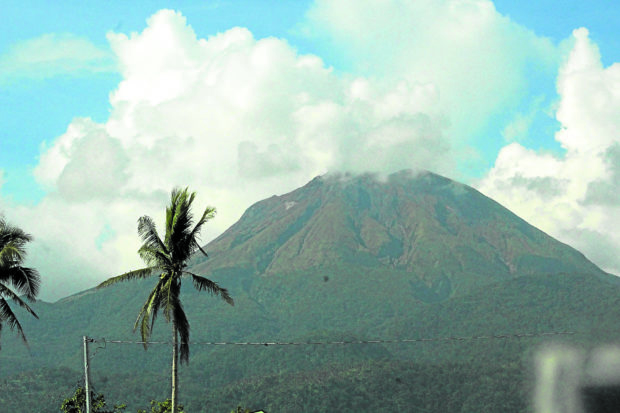
FILE PHOTO: Mt. Bulusan in Sorsogon province showing signs of restiveness, prompting the Philippine Institute of Volcanology and Seismology (Phivolcs) to raise alert level 1 over the volcano on July 6, 2022. – Alert Level 1 stays in Mt. Bulusan as Phivolcs reports on Wednesday, June 29, 2022, increased volcanic activity and 213 quakes since June 24, 2022. —Bureau of Fisheries and Aquatic Resources BICOL
MANILA, Philippines — The Philippine Institute of Volcanology and Seismology (Phivolcs) has marked an increase in volcanic activity in Mt. Bulusan in Sorsogon, reporting 213 quakes since June 24.
Phivolcs said in an advisory Wednesday that the strongest was a magnitude 3.5 volcanic earthquake recorded at 11:27 p.m. on June 24.
At 1:39 p.m. on Wednesday, Phivolcs said the Bulusan Volcano Network (BVN) recorded a magnitude 2.3 volcanic earthquake at Mt. Bulusan.
“Both these events were located on the south-southeastern flank of Bulusan edifice at depths of approximately 3 kilometers,” Phivolcs explained.
Inflation has also been recorded through ground deformation monitoring in the southern flanks of the volcano since June 20, which is consistent with continuous GPS recording of swelling in Mt. Bulusan’s southern flanks since March, according to Phivolcs.
“These monitoring parameters warn of the possibilities of renewed eruptive activity from the Bulusan summit and potentially from the vents of its southern sides,” Phivolcs said.
The latest monitoring convinced Philvolcs to keep Mt. Bulusan’s status at Alert Level 1, which means low-level unrest.
Phivolcs repeated its reminder that entry into the 4-kilometer radius Permanent Danger Zone (PDZ) of the volcano remains strictly prohibited and that vigilance in the 2-kilometer Extended Danger Zone (EDZ) on the southeast sector must be exercised “due to the increased possibilities of sudden and hazardous phreatic eruptions.”
The public, especially those living within valleys and along river or stream channels, especially on the southeast, southwest, and northwest sector of the Mt. Bulusan’s edifice, should also be vigilant against “sediment-laden stream flows and lahars in the event of heavy and prolonged rainfall should a phreatic eruption occur,” the Philvolcs added.
“DOST–PHIVOLCS is closely monitoring Bulusan Volcano’s condition and any new development will be communicated to all concerned stakeholders,” it assured.
Mt. Bulusan spewed ash via a phreatic eruption on June 5 and then erupted again on June 12.
RELATED STORIES
Bulusan eruption rains ash, forces evacuation
Bulusan erupts anew; ashfall reaches Albay